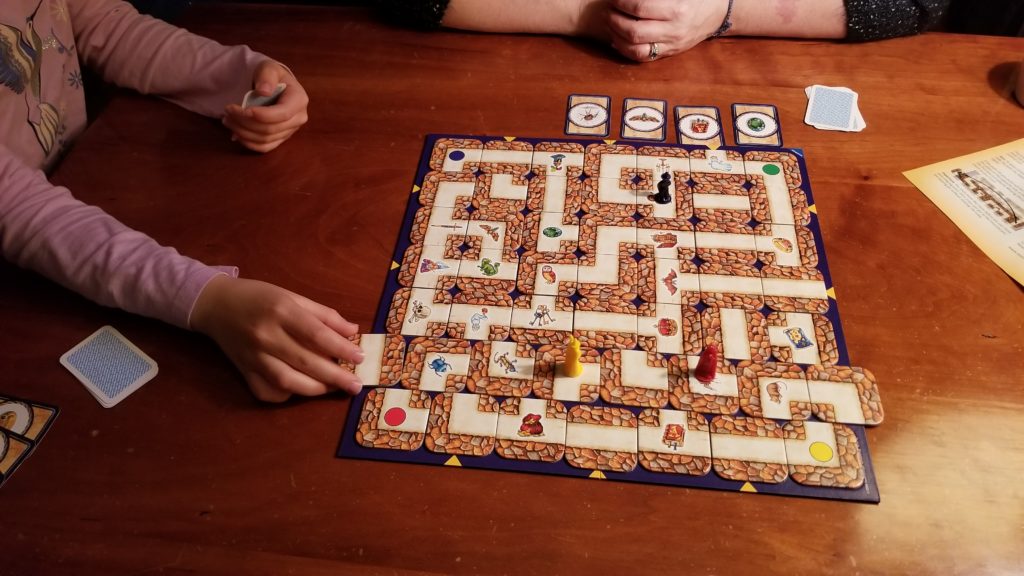
In Labyrinth, each player is a wizard seeking secret treasures in a maze where the hallways and walls are always shifting.
The game board is designed with square maze pieces that are adhered to create an open grid pattern where loose modular maze tiles are randomly placed. Some of those tiles (both adhered and loose) have treasure images on them.
Treasure cards matching the treasures in the maze are dealt out evenly at the start of the game and kept face-down, but with each top one revealed to that player alone. In this way, each player knows what treasure they currently need but no one else knows what anyone else needs.
Each turn, the active player will seek to land on the current treasure they need, which begins with using a spare tile piece to push a column or row of the maze one square over, thereby changing the layout of how the hallways and walls are laid out. Then the player moves her wizard figure any number of spaces, hopefully getting all the way to the treasure, but if not, at least getting closer to it (with the foresight to stop on a tile that could lead to getting the treasure on a future turn).
The problem is, every player wants to get their own treasures, as well, and will shift the maze to their own benefit, which leads to the maze getting shifted around in some unexpected–and sometimes frustrating–ways for others.
When a player lands on the current needed treasure, the card is revealed to all players and put aside as completed, and then they look at the next top card to find what their next secret treasure is that they have to try to get to.
The first player to find all treasures and get back to their colour-coded starting corner is the winner.
Labyrinth is a game that’s quick to pick up and play but gameplay can sometimes go quickly or frustratingly slowly. There are occasions when you’ve just obtained a treasure and the next one you need is only one or two tiles away and it stays there until your next turn, which makes it a quick and easy score. Other times, your next treasure will be in the opposite corner from where you are, which takes a lot more careful playing to get yourself there as everything around you shifts during other players’ turns.
It’s ostensibly made for all players from kids to grandparents, but families including younger kids may want to look at starting with the Junior version of the game. While the concept is easy enough for a pretty young kid to grasp, we know first-hand how frustrated some young ones can get when their plans to get to the next treasure are wrecked by the shifting of one particular row or column of tiles they didn’t want moved, so gear your version of the game accordingly.
I find Labyrinth more fun than not, but it does depend on a little too much luck for my liking. I’m no master strategist by any stretch, but it can be a little frustrating/tiring when your plan gets totally thrown off by the choices that other players make. And unlike some games where more players can add to the fun, with Labyrinth, more players only means more chance of those frustrating changes happening before you regain some control in where you’re heading.
As such, I suspect that Labyrinth will never be a go-to game for me, but I’ll play it from time to time whenever someone else wants to bring it out again.